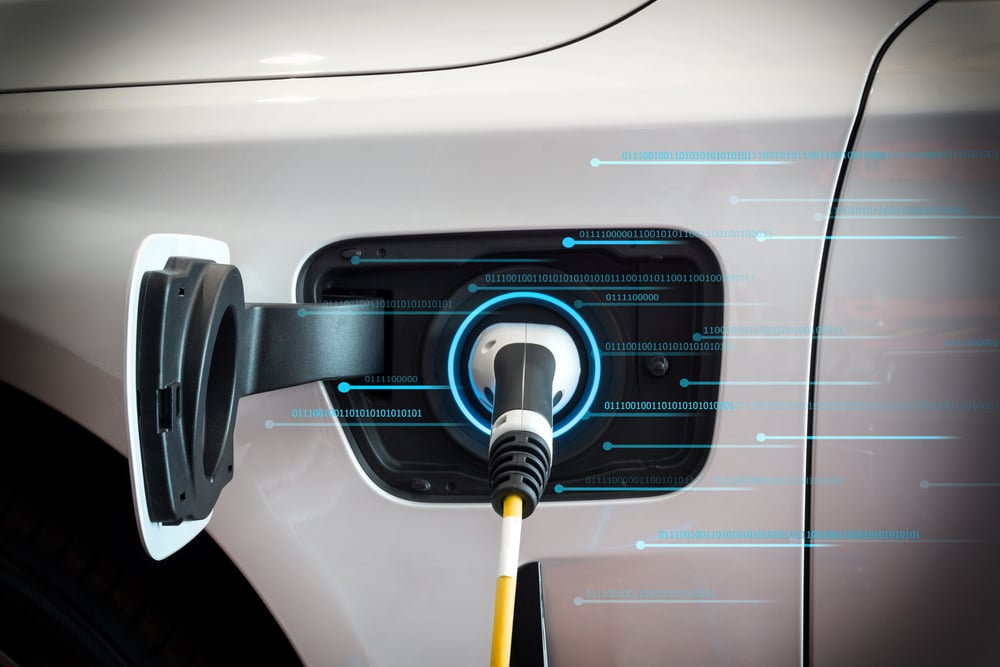
And we’re not alone in that assessment.
To manage this expected growth, governments are introducing new regulations mandating connectivity to standardize technological developments and make EV charging more accessible to all.
While the connectivity of a charging station can bring many benefits, it also enables you to monitor and control your charging sessions via a charging app. With the digital charging assistant on your smartphone, you can start and stop your charging sessions from your couch. However, there is more to it. Indeed, home charging apps can unlock a range of insights and data. In this article, we will take a closer look at how you can benefit from those insights.

How to benefit from home EV charging insights?
Thanks to the connectivity between a charging station and an app on a smartphone, drivers can collect useful performance data of their charging station and get specific insights on their charging sessions.
But what does this mean?
Well, with this data you can help keep electricity consumption under control, keep track of renewable energy usage, schedule charging sessions to optimize energy costs and renewable energy usage, and manage multiple users or even charging stations. Let’s look at each of these benefits in a bit more detail below.
Control energy consumption
An often overlooked benefit of connected charging and charging apps is the ability to see your power consumption in real time. While many don’t realize it, EV charging is an energy-intensive activity that can put your home’s electrical supply under pressure.
While energy use varies greatly between EVs and charger types, a dedicated home charger can deliver between 7,4 kW and 22 kW (or 7,400 and 22,000 watts) of power to an EV. By comparison, a dishwasher uses between 1,050 and 1,500 W: in other words, charging your EV uses 7 to 14 times as much energy as running your dishwasher*.

As such, plugging in your EV to charge may overwhelm your home’s supply if too many other appliances are also using power simultaneously. For instance, if you’ve come home from work and are making dinner with an electric stove, the oven, and the dishwasher on at the same time, your household energy usage and electrical circuit might not allow for also charging your car.
By gaining information on energy usage, connected charging allows you to optimize the times when you charge your car and ensure your energy consumption stays within optimal levels.
If you have solar panels and a renewable energy integration with your charging station, some EV charging apps will allow you to keep track of and even manage your renewable energy usage.
*Disclaimer: These numbers differ based on individual situations and driving behavior and are meant to give a ballpark estimate of energy usage and costs. They are not representative of a real-life situation.
Save on your electricity bill
Viewing insights on energy consumption is also helpful for checking how much you currently pay for EV charging and discovering ways to reduce charging costs.

Electricity is commonly billed per kilowatt-hour (kWh), where you pay a given amount per kWh you use. In many cases, utility companies provide differentiated pricing, where electricity used during peak times costs more and off-peak costs less. This varies greatly between countries, cities, and utility companies, but generally, off-peak times tend to be at night and during weekends, when energy consumption across the grid is lower.
By comparing how much you pay for charging during peak times rather than off-peak, you can determine whether the additional cost is worth it for your needs and, if necessary, choose to charge during off-peak times instead, by scheduling charging at night.
Depending on your charging station and app, there is even a smart charging functionality called load shifting that can automatically arrange this for you.

Manage multiple users and charging stations
Beyond managing energy consumption and saving costs, a charging app can also separate data and insights for multiple users and charging stations. This is relevant in the case where you own more than one electric vehicle (or charging stations) and you want to keep track of the charging insights separately.
But this can also be relevant for multi-unit residential buildings and apartment complexes, where EV charging stations are shared between residents. In these situations, getting accurate information on energy consumption for billing can be challenging, especially if charging stations are freely accessible.
Connected charging can help overcome this by tracking energy use precisely and accurately allocating consumption to specific users.

Charging apps can unlock a range of insights that can streamline home EV charging by tracking energy consumption, optimizing costs, and seamlessly managing multiple users and charging stations.
While insights are a powerful benefit of connected charging stations, connectivity has far more advantages. To find out more, check out our in-depth article on the topic.